Blackeye Galaxy (Messier 64)
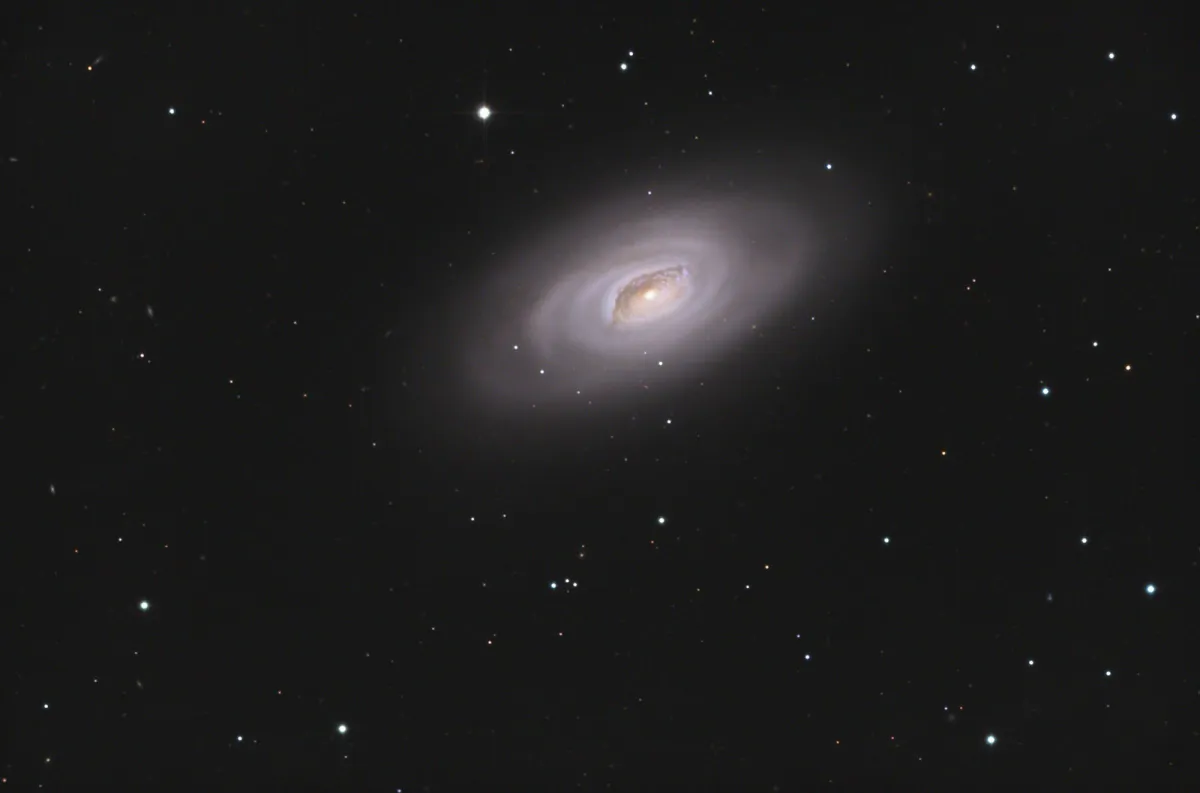
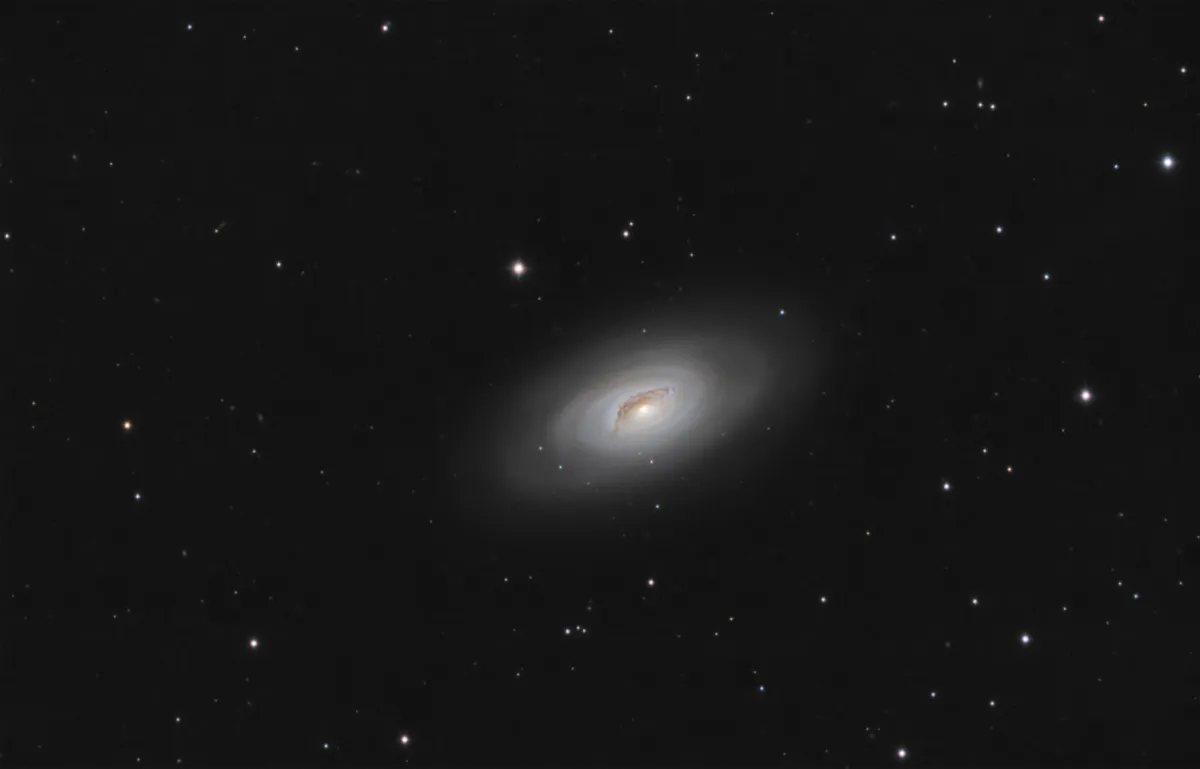
History
In 1779 Johann E. Bode discovered the galaxy M 64. However, he only recognized it as a "small, nebulous star". A year later, Charles Messier came across the same object and listed it under number 64.
Physical Properties
The structure of M 64 is very unusual. It has been classified by some as a Hubble type Sa and by others as an Sb - but somehow it doesn't fit into Hubble's simple scheme. The Revised Morpholobical Galaxy Classification System is somewhat more detailed in this regard: outer ring, spiral without bars, inner ring and S-shape, level 'ab', luminosity class II-III ... or in short: (R)SA(rs)ab II- III.
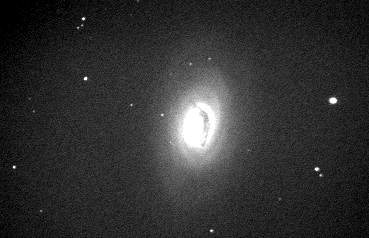
The spiral arms show a beautifully fine and uniform structure without any trace of dissolution in star clouds or nebulae. In the central region, a huge cloud of dust suddenly becomes noticeable and surrounds the entire northern and eastern side of the center. The galaxy owes the name Blackeye to this cloud of dust: some see the lid of a closed eye in the core and the long, made-up eyelashes in the dark cloud; for others, the dark cloud is a thick, bushy eyebrow and the core is the eye that looks at you.
In photographs from large telescopes, the dust cloud shows many fine details and then breaks up into a complicated region of mixed dark and glowing nebulae that surround the central region. D'Arrest believed he saw the center partially dissolved, while Lord Rosse interpreted the bright spots as a nearby cluster of small stars.
The true nature of M 64 was only recently discovered: In the galaxy, two independent disks rotate in different directions! Observations with the Very Large Array in New Mexico and the Westerbork Synthesis Radio Telescope in the Netherlands showed that neutral hydrogen in the core region of M 64 rotates the other way around than the rest of the disk. Where the two disks rub against each other, the gas loses its angular momentum and crashes into the core of the galaxy. This process creates the peculiar structure. It is also not stable, but it is estimated that it will end in about a billion years. At that point in time, all the gas from both disks will have fallen into the center and stimulate new star formation there. The galaxy is believed to have captured a cloud of gas, perhaps a tiny dwarf elliptical galaxy. This material had random movements and caused the inner disc to rotate in the opposite direction. The system stabilized over a period of time and stars were able to form. Such opposing disks are extremely rare. Another well-known specimen is the young elliptical galaxy NGC 4550 in the constellation Virgo.
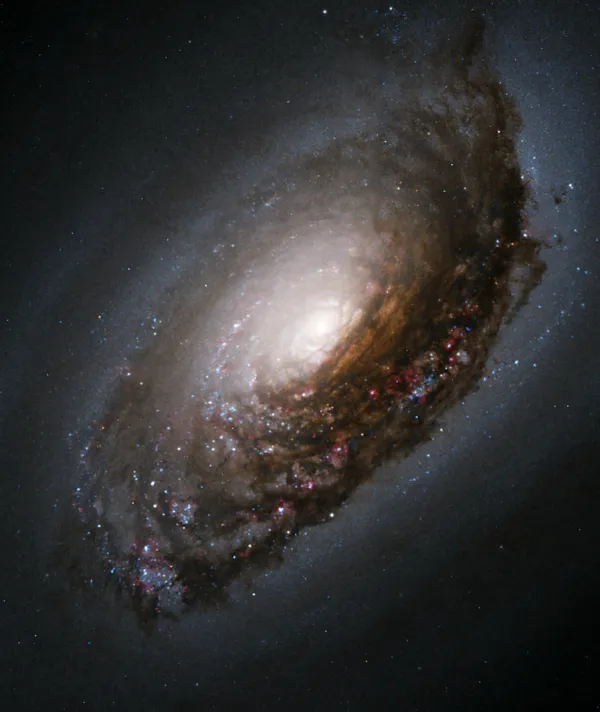
The exact distance from M 64 has not been precisely determined, but it appears to be around 20-25 million light years. The redshift is 420 km/s, which is about a third of the value for a typical Virgo cluster galaxy. The apparent diameter of 9.2 arc minutes would then correspond to 6',000 light years. Others attribute a distance of 44 million light years to M 64, which is about twice the diameter.
The light from M 64 is a little more yellow than that of many other spiral galaxies, the integrated spectral class is about G7.
| Designation | NGC 4826 |
| Type | Gx (Sab) |
| Right Ascension (J2000.0) | 12h 56m 43.8s |
| Declination (J2000.0) | +21° 40' 59" |
| Diameter | 10 × 5.4 arcmin |
| Photographic (blue) magnitude | 9.4 mag |
| Visual magnitude | 8.5 mag |
| Surface brightness | 12.7 mag·arcmin-2 |
| Position Angle | 115° |
| Redshift (z) | 0.001361 |
| Distance derived from z | 5.75 Mpc |
| Metric Distance | 5.340 Mpc |
| Dreyer Description | ! vB, vL, vmE 120° ±, bMSBN |
| Identification, Remarks | M 64, UGC 8062, MCG 4-31-1, CGCG 130-1, KARA 559, IRAS 12542+2157, Black Eye galaxy |
How to find the Blackeye Galaxy?
The rather small and inconspicuous constellation Coma Berenices is mostly noticed by the Coma Cluster. With the naked eye you can see a relatively large (300 arc minutes diameter) open star cluster, the Coma cluster, between the constellations Leo and Bootes.
Fortunately, the Blackeye Galaxy is located near a bright star, the 5.1 mag star 35 Com. So it can be localized fairly well under medium conditions even without a finderscope.
35 Com lies between Alpha Com and the Coma Cluster (see finder chart). A little less than a degree northeast of 35 Com you finally find Messier 64. The galaxy is found quickly, especially with a long-focal wide-angle eyepiece, if you set 35 Com.
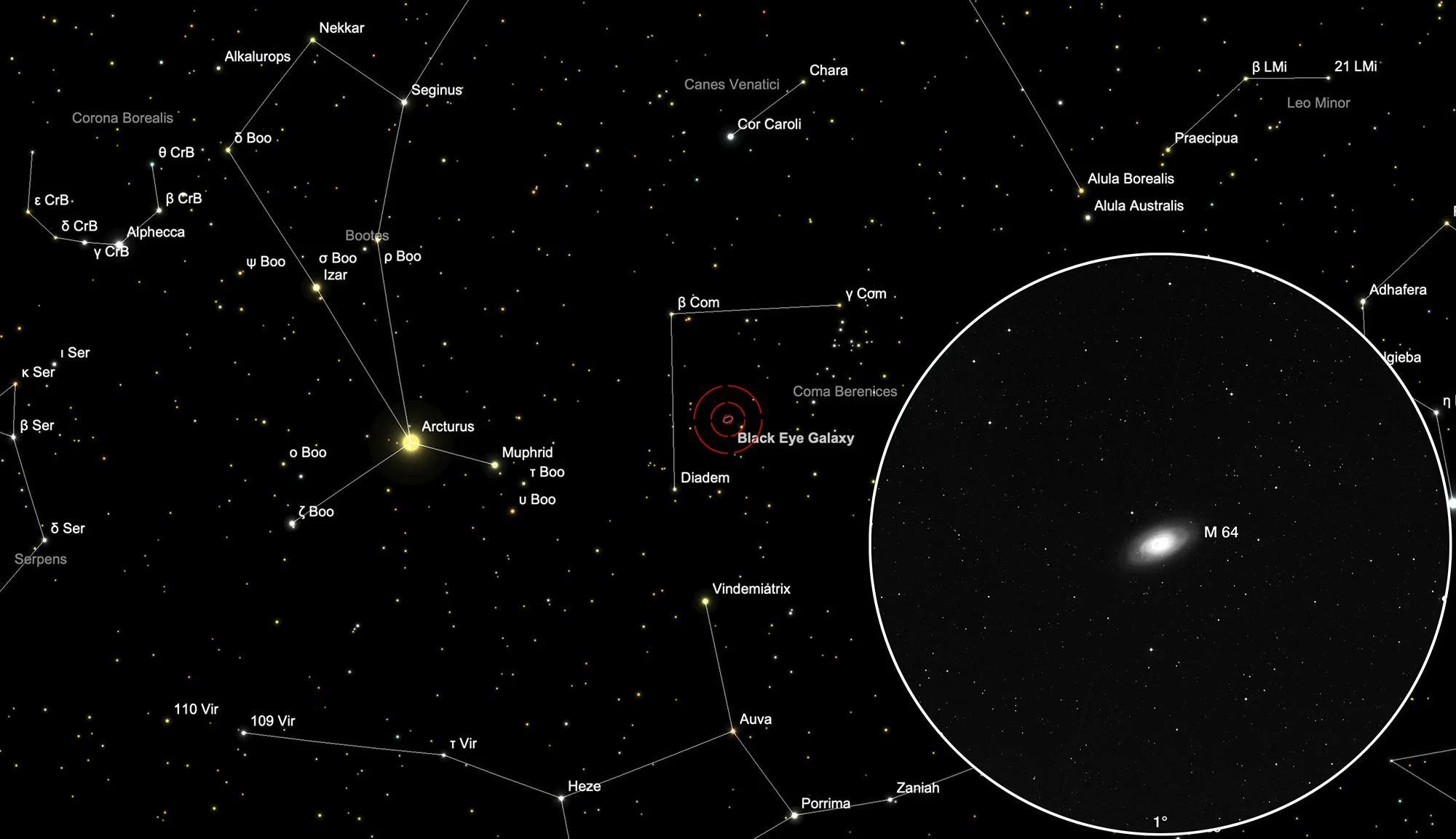
Visual Observation
200 mm aperture: In the long-focal wide-angle eyepiece, which you preferably used to find the object, the galaxy presents itself in its entire extent and its brightness - after all, it is one of the 12 brightest galaxies in the sky. The size and shape can also be easily recognized. The large, dark band of dust, the actual Blackeye, is particularly evident in medium-sized amateur telescopes at higher magnifications. The long focal length eyepiece should therefore be gradually exchanged for a shorter focal length. With my 20 cm Schmidt-Cassegrain telescope, the Blackeye showed itself better at 226x magnification than at 135x. The best contrast is likely to result from this opening at 150 to 200 times, depending on the viewing conditions. In order to see the Blackeye well, it is advisable to enlarge the magnification even when using a small telescope. When zoomed in, the view of the Blackeye galaxy is fantastically beautiful. In my opinion, it is one of the most beautiful extragalactic objects I have observed so far, along with the Sombrero Galaxy and NGC 4565. — 1996, Philipp Reza Heck

762 mm aperture: The visual impression can be reproduced with a MallinCam video camera and an integration time of around three seconds. A tracking 30" f/3.3 SlipStream Dobsonian was used. The resulting image comes very close to visual vision with a 13 mm Tele Vue Ethos eyepiece. — 14. 3. 2012, Eduard von Bergen